Architecture industry is big industry and Architectural Floor Planning and designing take most of the time to design and visualize how can a floor look best and before 2023 most of this work were done manually but now most of this work is done by Artificial Intelligence it can visualize fast and generate floor plans and designs in less time and in this article we are taking close look to Best AI Tools for Architectural Floor Plans that can design with intelligence and save time .
How ai can work For Architectural Floor Plans And Design
AI helps architects make better floor plans by looking at the space and figuring out the best layouts. It saves time by doing repetitive tasks and improves how buildings work.
With AI, architects can design spaces that fit people’s needs better. The AI learns what people like and adjusts plans accordingly, making sure buildings look good and work well.
AI software helps architects use space better, thinking about things like light, air, and how easy it is to get around. This means buildings are more comfortable, eco-friendly, and people-friendly.
Architects can work together better using AI. Everyone involved in a project can talk and make changes quickly, so designs get better faster.
AI helps architects come up with new ideas by looking at lots of different designs. It helps turn creative ideas into real plans that work for buildings.
Below Are The Best AI Tools for Architectural Floor Plans
1.Maket AI
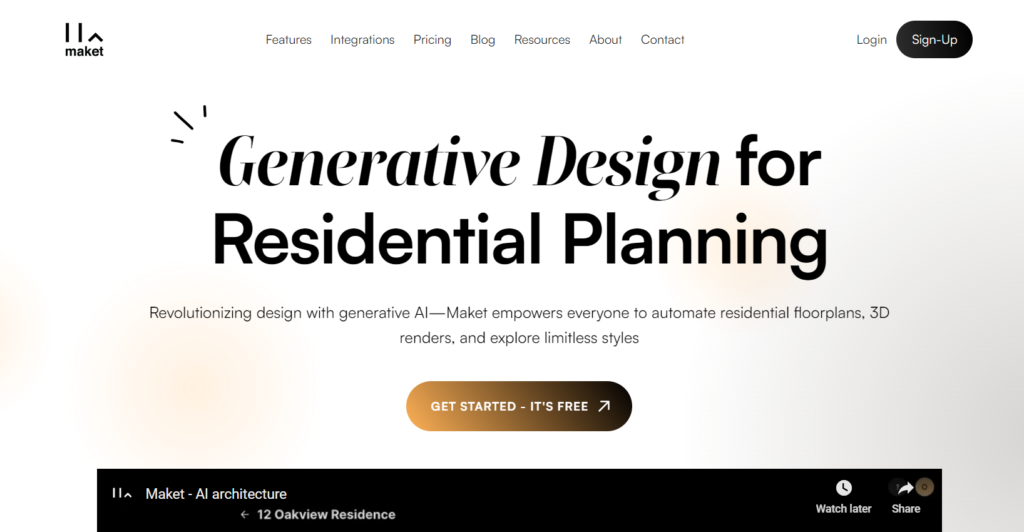
Maket is an AI-generated residential design platform that automates and streamlines the process of residential planning and design. The platform caters to the needs of architects, designers, and those involved in residential construction, providing features such as automated floorplan generation, 3D rendering, style exploration, and compliance with zoning codes.
Maket’s all-encompassing platform operates primarily as a web-based application, offering a range of functionalities to simplify early-stage planning and design. The platform’s AI technology enables users to generate custom residential floorplans, explore diverse design styles, and receive informed design guidance.
Maket simplifies zoning research, allowing users to upload PDFs, ask plain language questions, and receive instant answers for code compliance.
2. Coohom
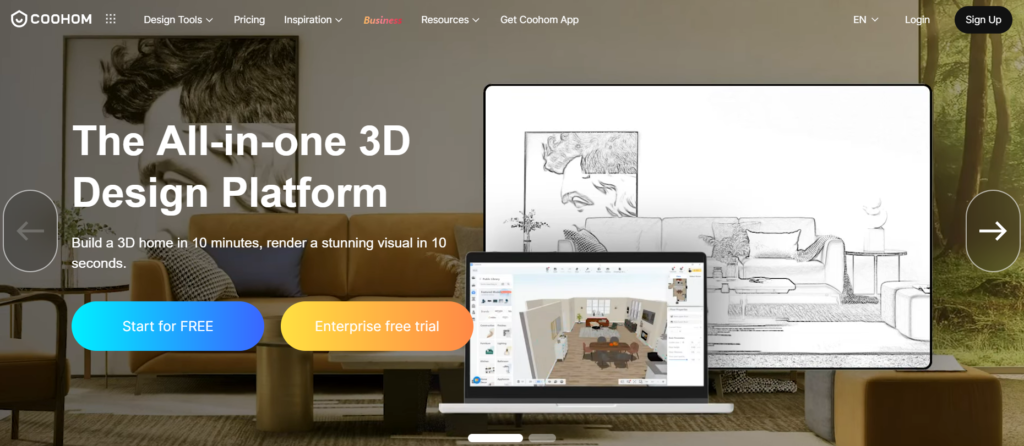
Coohom is an AI-powered interior design platform that offers a suite of tools to help users create stunning 3D visualizations of their dream homes, offices, and other spaces in a matter of minutes.
The platform’s AI technology enables users to generate custom residential floorplans, explore diverse design styles, and receive informed design guidance. Coohom’s AI-powered design suggestions analyze user data and preferences to suggest design ideas and styles that are tailored to each individual’s unique tastes.
Coohom’s AI-powered interior design tools are helping to democratize the world of interior design, making it more accessible and affordable for everyone.
3.PlanFinder AI
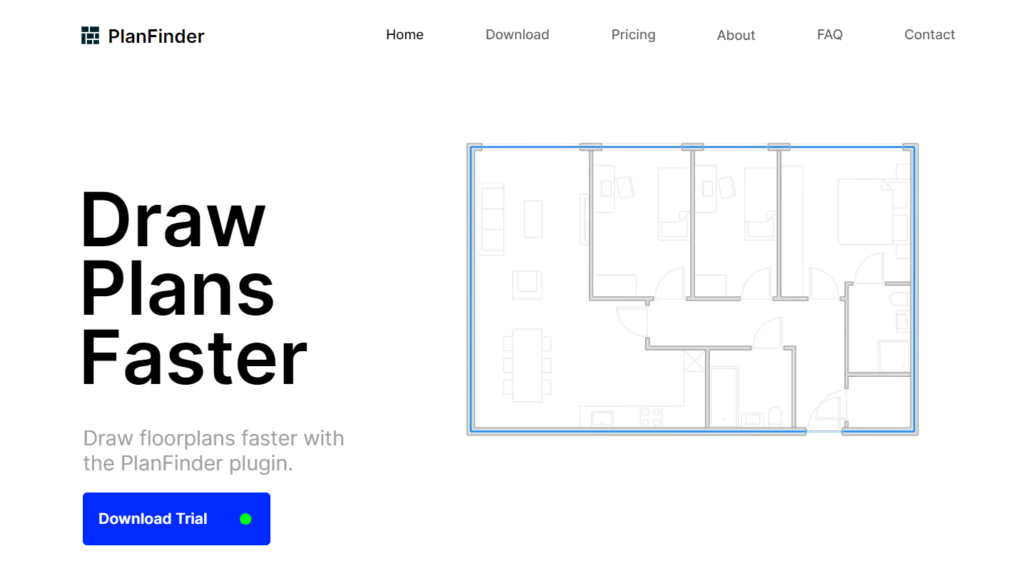
PlanFinder is an AI-powered software plugin for existing CAD and BIM software, designed to expedite the creation of apartment plans. The plugin offers two main functionalities Fit and Furnish.
With Fit, users can adapt existing plans to their input and filter based on their preferences. Furnish allows for the rapid furnishing of a plan. The platform employs machine learning to analyze existing data and generate new floor plans and furniture options within seconds.
It simplifies the planning process, making it an invaluable tool for architects and designers.
4.Qbiq
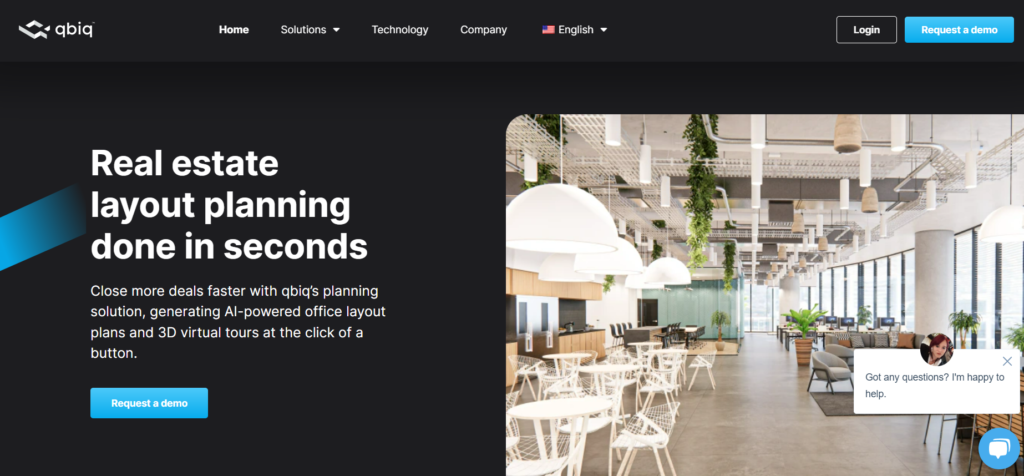
Qbiq is an innovative AI-powered planning tool designed for real estate developers, architects, and designers, specializing in office layouts. The platform’s AI engines synthesize data from various sources, including regulations, building constraints, and cost optimization, to deliver data-driven insights for planning.
Qbiq’s generative design system can generate 3D renderings and virtual tours in less than 24 hours, providing fully optimized layout planning based on user requirements.
The platform’s AI and design engines generate thousands of different plans and compare alternatives, delivering better results for clients in a fraction of the time. Qbiq’s technology is transforming real estate layout planning, making it easier and more accessible than ever.
5.Hosta AI
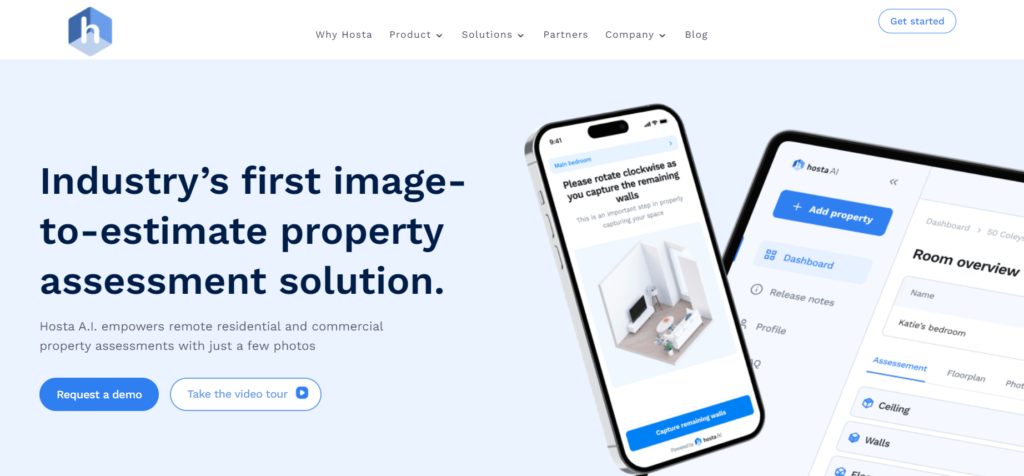
Hosta Ai is an AI-powered property assessment platform that uses computer vision and machine learning technology to automate property assessments. The platform simplifies the claims process for insurers and customers, providing detailed property data, including floor plans and material take-offs, within seconds.
Hosta.ai’s technology is device-agnostic, allowing users to capture images with any camera and upload them to the platform for analysis. The platform’s AI technology enables insurers to settle claims within a day, helping policyholders feel safe quickly and enabling adjusters to handle higher claim volumes.
Hosta.ai’s innovative approach to property assessment is transforming the insurance industry, making it faster, more accessible, and more efficient.
6.Covetools
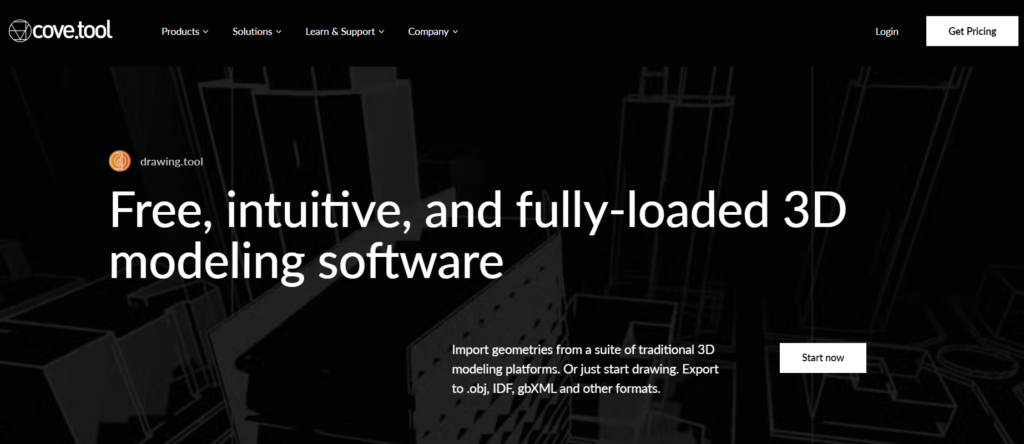
Covetool Drawing Tool is an AI-powered software plugin for existing CAD and BIM software, designed to expedite the creation of sustainable building designs. The plugin offers two main functionalities Fit and Furnish.
With Fit, users can adapt existing plans to their input and filter based on their preferences. Furnish allows for the rapid furnishing of a plan. The platform employs machine learning to analyze existing data and generate new floor plans and furniture options within seconds.
Cove.tool’s technology is transforming sustainable building design, making it faster, more accessible, and more efficient. The platform is a valuable tool for architects and designers looking to optimize building design for sustainability.
7.Opal Ai

Opal Ai is an AI-powered platform that integrates generative AI capabilities, including AI Brainstorming, AI Rewrite, and AI Translate, into its marketing software. These features are designed to enhance complex campaign planning and content collaboration, providing practical AI solutions for marketers.
The platform’s “co-pilot” positioning emphasizes the augmentation of human decision-making and taste, ensuring that users remain in control of the AI applications. Opal.ai’s innovative approach aims to streamline marketing workflows, offering efficient and transparent AI integration within the platform.
The platform’s AI capabilities are tailored to empower marketers, providing meaningful time savings and enhancing the efficiency of marketing operations.
8.Getfloorplan

Getfloorplan is an AI-powered platform that simplifies the creation of 2D and 3D floor plans and 360° virtual tours. The tool leverages AI to generate up to 1,000 renders daily, catering to the needs of real estate professionals, architects, and interior designers.
Users can easily upload their floor plans or sketches, and the AI will swiftly produce 2D and 3D assets for review. The platform’s multi-device compatibility ensures convenience, allowing access from desktops, mobile devices, and tablets.
Getfloorplan.com offers a time-saving, cost-effective solution for creating high-quality floor plans and virtual tours, ultimately enhancing customer engagement.
9.Room AI
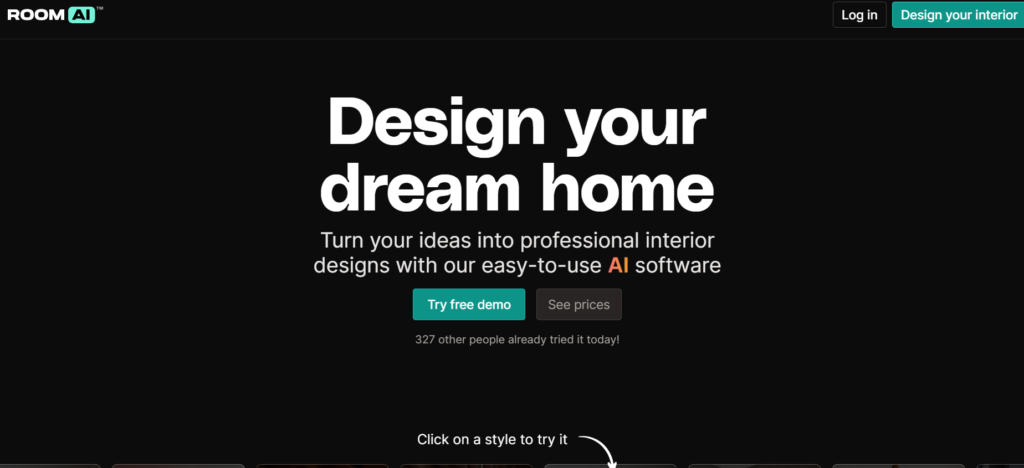
Room AI is an AI-powered interior design tool that allows users to easily redesign or create their ideal living spaces. The platform offers a user-friendly interface for homeowners, interior designers, real estate agents, and architects.
Users can restyle existing rooms or generate new designs from scratch, with an extensive selection of styles to choose from, including French Country, Contemporary, Shabby Chic, and more. RoomAI.com employs machine learning to analyze existing data and generate new floor plans and furniture options within seconds.
The platform is device-agnostic, allowing access from desktops, mobile devices, and tablets. RoomAI.com is a valuable tool for anyone looking to create high-quality interior designs quickly and efficiently.
10.Planner 5D
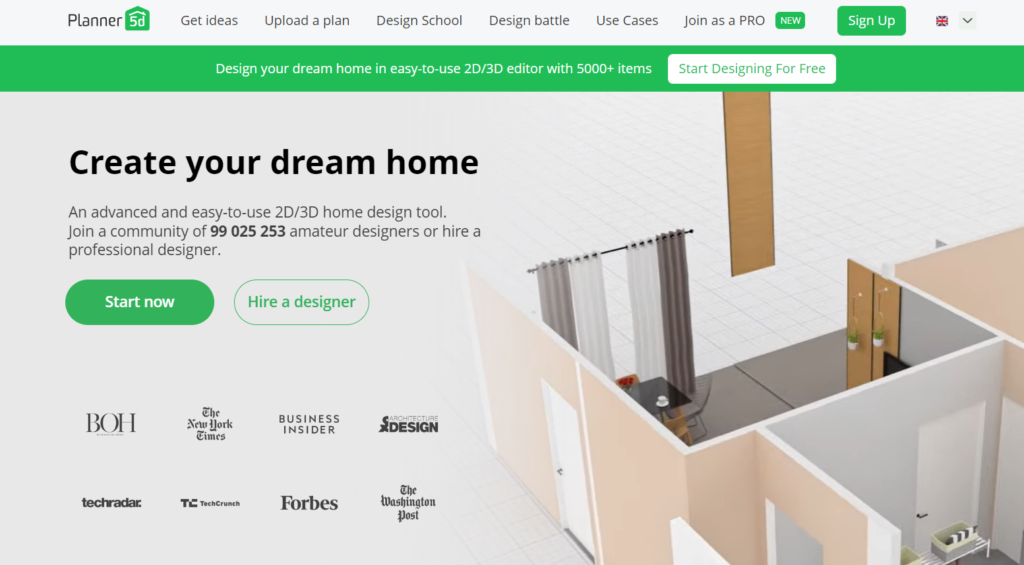
Planner 5D is an AI-powered interior design tool that revolutionizes the design process, offering a user-friendly platform for professionals and beginners. The software utilizes AI to automatically create lifelike 3D models of furniture and objects based on user input, making interior design fun and engaging.
With features like Design Generator, Smart Wizard, and AI floor plan recognition, Planner 5D empowers users to create stunning designs in minutes, providing invaluable guidance and design recommendations. The platform’s AI technology allows for an immersive experience, enabling users to make informed decisions and achieve their desired results.
Planner 5D’s AI tools simplify the design process, ensuring that users’ creative ideas become a breathtaking reality.
FAQ’S
How do AI tools make creating architectural floor plans better?
AI tools make creating floor plans faster and smoother. They do repetitive tasks for you, suggest good designs, and give feedback instantly. This saves time and helps make better designs.
Can AI tools make customized floor plans for specific needs?
Yes, AI tools can make floor plans that fit exactly what you need. They learn from what you tell them and adjust plans to match your preferences. So, they can make personalized designs.
AI tools are easy to use for architects and designers?
Yes, most of AI tools are made to be simple and easy to use. They have clear menus and can be customized. If you need help, they offer guides and support.
What are the benefits of using AI tools for architectural floor plans?
Using AI tools makes designing faster and better. They help architects find good ways to use space, come up with new ideas, and work together smoothly. This makes building projects more successful.












